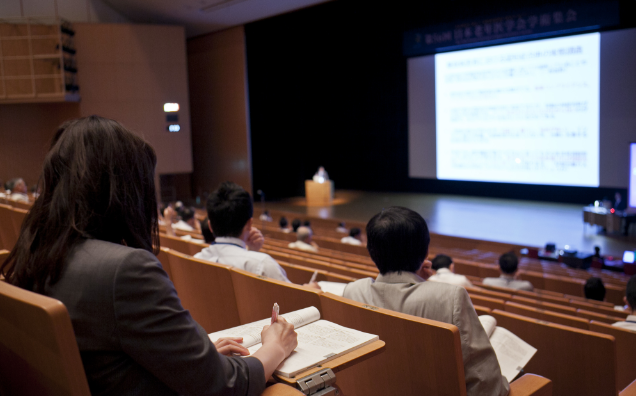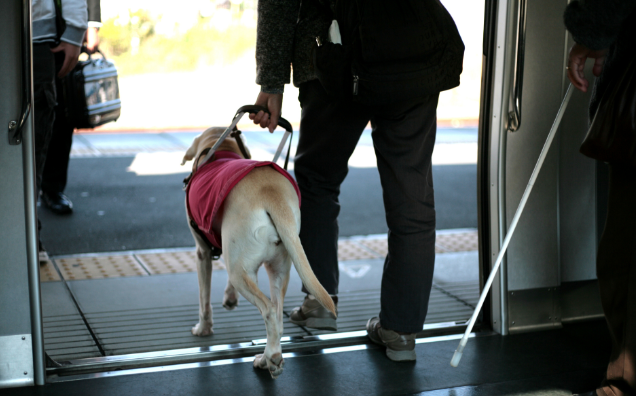- TOP >
- Efforts of Cos International
Efforts of Cos International 1F Suruga Building, 3-24-1 Shiba, Minato-ku, Tokyo
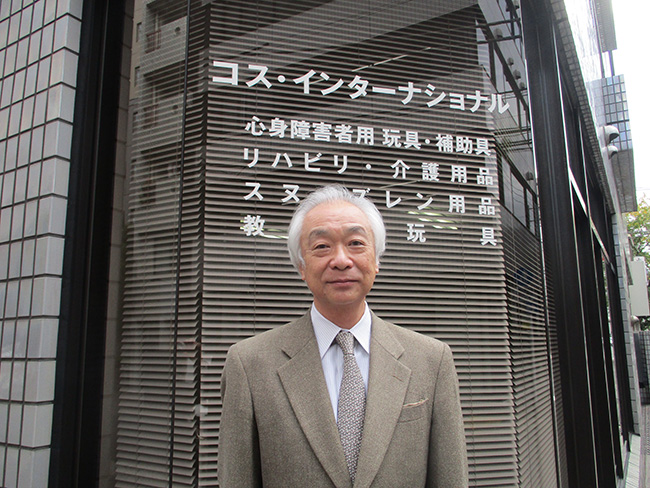 The CEO Mr Hideyasu Kosuga
The CEO Mr Hideyasu Kosuga
In recent years, we started to hear that “sensory rooms” are installed in stadiums or airports. For people with sensory hypersensitivity like hearing or sight, they may find it difficult to adjust their emotions or actions due to stimuli and become panic. “Sensory rooms” are rooms for them to relax by reducing stimulations of light or sound. Cos International introduced Snoezelen to sensory rooms and provides a more comfortable space. The CEO Mr Hideyasu Kosuga told us about the necessity of sensory rooms at coming sightseeing spots.
 The CEO Mr Hideyasu Kosuga
The CEO Mr Hideyasu Kosuga
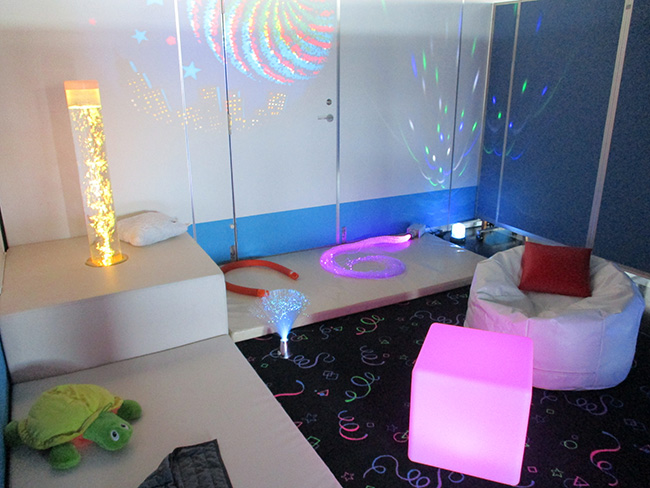 Example of Snoezelen corner (sensory corner)
Example of Snoezelen corner (sensory corner)
What is Snoezelen
Snoezelen is a mission born in 1970s at the centre de Hartenberg, a Dutch facility for individuals with severe intellectual disabilities. Snoezelen is a neological contraction formed from a blend of the Dutch “snuffelen”, meaning to snuffle and explore, and “doezelen”, meaning to doze relaxingly. It also means “as it is, enjoy the environment”. Snoezelen is an environment equipped with machines or tools stimulate to the five senses, such as bubble tubes with bubbles going up the water inside, shimmering fibre optic strands, projectors showing images on walls, waterbeds and aroma.
At that time, the facility provided acceptable stimuli or environment for individuals with severe disabilities, and they chose their own stimuli or environment to stay. Caregivers or partners shared the same environment and took communications with them. Later, Snoezelen was known to be able to calm problematic actions and have effect on developmental support. As a result, it is also used as gentle treatment for developmental disabilities like intellectual disability, autism spectrum disorder and ADHD, mental disabilities, dementia, etc.
In 1994, our company imported the first Snoezelen machine to Japan. We introduced Snoezelen to facilities for children (individuals) with severe motor and intellectual disabilities, Ryouiku (treatment and education) facilities, schools for special needs education, elderly facilities, etc. and set up sensory rooms. Now there are more than 1,000 facilities and the needs of sensory rooms are spreading.
 Example of Snoezelen corner (sensory corner)
Example of Snoezelen corner (sensory corner)
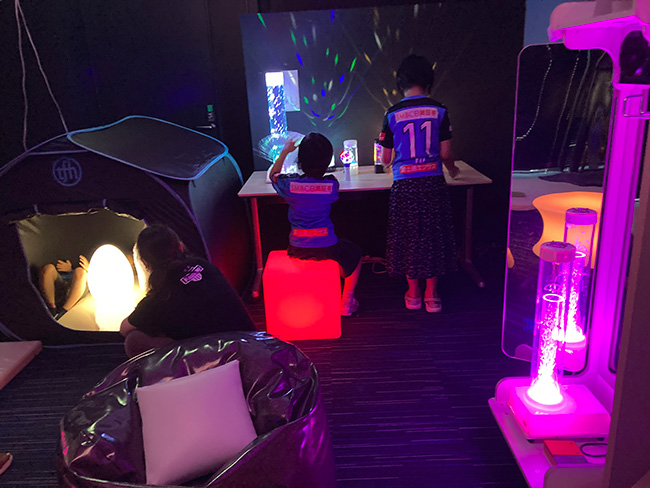 Snoezelen providing acceptable stimuli or environment
Snoezelen providing acceptable stimuli or environment
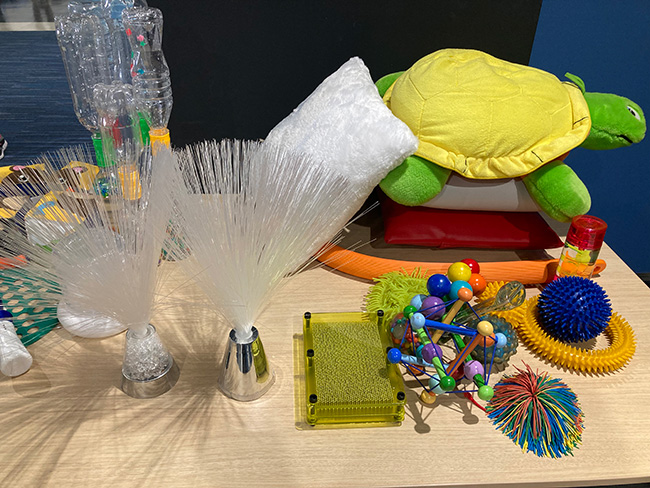 Various machines or tools for sensory stimulation
Various machines or tools for sensory stimulation
Soccer match watching event as a trigger
Sensory room was brought up in 2019 because of a soccer match watching event for children with developmental disabilities. One of the characteristics of developmental disabilities is hypersensitivity. For children with high sensory perception, stimuli like loud voices and sounds of cheers and bright lights are too strong that watching a sports match is painful. Since they cannot relax, many families who liked watching sports matches had to give up going to the stadium.
Seeing the issue, local government and some companies combined their strength and made an environment for children with developmental disabilities and their families to enjoy watching soccer matches. Our company set up a Snoezelen corner (sensory corner) in a room, providing a relaxing place to the children when the stimuli are strong. When we set up the sensory corner, we focus on “the purpose is to watch a soccer match”. Sensory corner is not a place for them to wait quietly, nor a playroom with toys.
There are two functions for sensory corner during a sports match. First, to relax oneself after getting difficult to adjust own emotion or action and calm down to get oneself back again. Second, to satisfy sensory input. Satisfaction of sensory input means accepting light or sound which make one comfortable and feeling satisfied. In Snoezelen, various machines or tools for sensory stimulation are provided, but it is up to the individual to choose. In the sensory corner, it is important for the individual to choose machines or tools that make him or her comfortable and adjust emotion on own. It also connects to autonomy that “as there is a relaxing place, maybe I will try to go to that place with some strong stimuli”. While going in and out the sensory corner, when they saw families and friends enjoying the match, quite a few children said they will also be able to watch the match at the stand.
 Snoezelen providing acceptable stimuli or environment
Snoezelen providing acceptable stimuli or environment
 Various machines or tools for sensory stimulation
Various machines or tools for sensory stimulation
Sensory room creates chances to go out
Hypersensitive children become panic easily at places they are not used to, or with strong stimuli. Sometimes their parents or siblings cannot go out, travel, nor even go shopping with them. It is common for them to produce loud voices or keep moving. Sometimes people who do not know them show displeasure, or even say inconsiderate words. Seeing their families got scolded or being sad, they will get hurt and may be more panic. At that moment, if they do not have a place to calm themselves, they will feel painful to go out and it will become a bad cycle. Also, their parents or siblings may feel stressed because they cannot go out smoothly. Currently, the set up of sensory rooms is limited to some places. Yet, with more sensory rooms or sensory corners set up in different places, children will feel relieved to have a relaxing place, and not only they but also their families will want to go out more. Moreover, to let everyone feel comfortable and enjoy travelling, it is important to set up rooms at sightseeing spots too. Just like nursing rooms and accessible toilets in department stores and public space, I hope sensory rooms and sensory corners will also be a standard in the future.
 social media accounts
social media accounts
Tokyo, a city that is accessible everywhere to anyone.
Sightseeing where you wish, as you wish.
This ability to travel anywhere you please makes life that much richer.
Tokyo welcomes your visit.
Here you can encounter tradition,
history, culture, nature, technology,
and, best of all, smiling faces.
Making tourism closer and more
enjoyable through accessible tourism.



